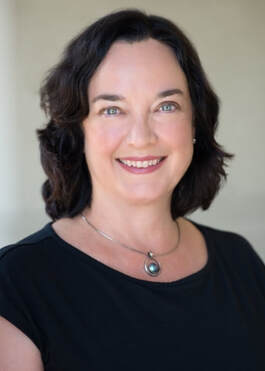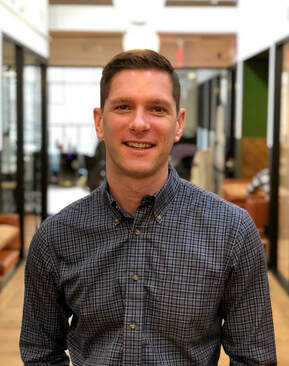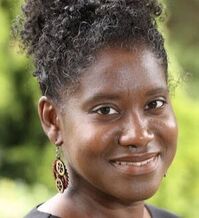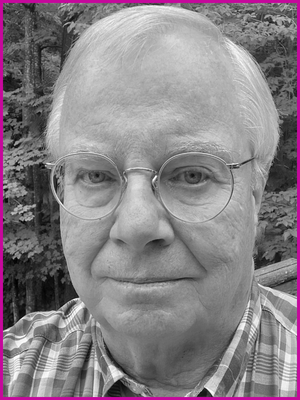 Sarah Hanawald Sarah Hanawald Welcome back... to distance learning (for many of us). Let’s be honest--this isn’t where we hoped we’d be when we started the school year. Whether it’s in response to travel, rising case loads, or local restrictions, many schools have returned to online instruction at the moment when teachers are feeling more exhausted and overwhelmed as ever. Schools may need to be in distance mode, but it doesn’t have to be at the expense of their teachers. There are concrete steps you can take to make the next phase of this crisis more sustainable. First, it’s essential to recognize that schools aren’t able to operate online the same way they do on campus. I like to use the metaphor of a race here: your 100m sprinter and your 100m hurdler are covering the exact same distance, but they aren’t going to do it in the same amount of time. We trained as sprinters, and we've had to switch to the hurdles. The past nine months have thrown very real obstacles into the ways schools usually operate. Now, educators need to measure ourselves in the race we're running, not the one we expected to run. The race we’re in isn’t a 100m dash--it’s a 10k. Schools are in it for the long haul, and that means it’s time for academic leaders to develop significant plans to protect the energy and morale of the teachers who are responsible for delivering students and programs to the still unsighted and unmarked “end” of pandemic schooling. How? Not by gifting teachers coffee and chocolate or finding a game to open full-faculty Zoom meetings but by setting up structures that serve teachers professionally. Intentional leaders provide and fiercely protect adequate professional working time so that teachers can succeed in all aspects of their role. Protecting time for teachers to engage with their colleagues and their craft can be transformational. Math teacher José Vilson, the co-founder and executive director of EduColor, as well as the author of This Is Not A Test, has been speaking and writing for years about the negative impact of inadequate professional time. He cites OECD research revealing that US teachers get the least amount of compensated professional time when compared to their peers internationally. Noting that “teachers generally work better given better systems in which to work,” Vilson sees a need for leaders to ensure that teachers spend school-day (e.g., compensated) time completing essential tasks and improving their professional practice. There are schools that already build extended professional time (beyond planning periods) for teachers into their schedules. Schools have established scheduled “drop days” in which all the teachers in one department have full professional days built into the rotating schedule on a regular basis. Other schools have instituted longer, multi-day departmental or grade-level retreats that take place during specific times of the year. In each of these formats, the emphasis is on providing protected professional time for teachers that is focused solely on designing and building the student learning experience, free of student-facing responsibilities. This time should not be confused with regular office hours and planning/grading time that occur in the daily schedule. What do teachers do during these times? They may spend time collaborating with grade-level and department peers working on vertical and horizontal curriculum alignment. Other time may be spent building out future units in the learning management system or analyzing assessment results to re-align coming instruction. This professional time doesn’t take the place of daily office hours, planning time, or even actual breaks. Instead, these intentional times recognize the need for teachers to engage in significant intellectual tasks that cannot be completed in fits and starts of 30 minutes or by working all weekend and into the night. What do students do during these times? Older students may have unstructured time to use for work in other disciplines; e.g., taking advantage of their art teacher’s office hours during what is normally the student’s math period. They may work collaboratively on extended projects when they would have had that class meeting. For younger students, while substitutes may be the answer, this also might be the time for extended projects with specialists or SEL initiatives. Building in significant non-student facing professional time for teachers will likely mean taking a hard look at schedules and resources. However, the result can be an immediate difference in the ability of teachers to carry themselves and their students safely through the coming months and beyond.
2 Comments
But The Brady Bunch show was fun in its way, and part of the entertainment value of the old intro was imagining relationships and just watching individuals in an ensemble cast BE in those little frames without being able to REALLY interact with their castmates. A DISCLAIMER: The faces in the old intro are all white and straight out of central casting circa 1969, but the emotional content of the composite is the point—a handful of kids and a couple of adults trying to figure out how to be themselves, simultaneously isolated and brought into juxtaposition by a trick of technology. At least they had the benefit of a studio-made background, Green Screen v1.0.
Do a screen grab of your next on-line class or meeting, and take a look. What will you see? It’ll likely be a kaleidoscope of earnestness, discomfort, engagement, boredom, distraction, and posing. Whether it’s all flesh-and-blood and right there in the room with us or whether it’s virtual and mediated by Owl cams or SmartBoards, school is just people together, trying to figure stuff out. We’re funny, we’re confused, we’re fake, we’re distracted, we’re deep into it, we’re moved and overjoyed and inspired and sad and lost and hopeful… There’s been a message for me in looking at that Brady Bunch intro screen: our goal, the main goal and the only one that matters, is to find joy and inspiration in each of these Brady Bunch moments that have been imposed on us—the same joy and inspiration that we all so loudly moan have been “lost” as we look back and impute them to each moment we spent in brick-and-mortar classrooms. But who “lost” it? The same ones who left their car keys or their homework or that letter from the insurance company or the note from their teacher somewhere that they can’t find it. We did. And if some students or some teachers are physically present while others must serve as Brady Bunch re-enactors on a computer screen while class marches on, we’ve got to remember why we’re there and what we’re doing and take EQUAL joy from each moment and EQUAL inspiration from each lesson, student, peer, or great idea—whether these moments, these cognitive events, and these fellow humans are sharing physical space with us or not. I’m not pushing this joy-and-inspiration concept just as feel-good advice. Every education researcher out there tells us that joy and inspiration, like physical comfort, are absolute necessities if real learning is to take place. We have to start finding ways to love the new, weird, uninvited modes of learning that we find ourselves having to use. Yes, much about this on-line stuff or wherever you and your school lie upon the FOPOL spectrum (“full or partial on-line”) is a pain in the neck, and there’s a learning curve that keeps rising to the distant sky even as the arc of history seems to be wavering in its bend toward justice. The world seems more complicated now than it was, and we sure do miss what’s past. Consider the Brady Bunch. Mike Brady’s three kids’ mother had died, and somehow Carol’s kids had lost a father. The kids hadn’t asked for the situation in which they found themselves, and surely neither had the dad. Circumstances threw them all together, and they made it work. Many episodes even revolved around—wait for it!—joy and inspiration. Yes, I know that was a TV show, and writers, not real people, made it work. But actual humans have been making hard things work and finding joy and inspiration as they do it—even after unimaginably terrible loss—as long as we have existed as a species. Making FOPOL education in its infinite manifestations work is on us—on each of us. No one asked for the novel coronavirus; circumstances imposed it. Nobody asked to have to stay home for a year or wear a mask or to attend grandmother’s memorial service online. But we can make this work if we all just remember that learning starts with comfort (says Maslow) and depends for all its greatest successes on joy and inspiration. We’ve become the Brady Bunch without the benefit of scriptwriters, much less clergy. But we’re all part of the human family, and we can do this. There are real, tangible benefits to practicing gratitude, and with Thanksgiving right around the corner, we have a chance to pause and reflect. According to Psychology Today, studies show that gratitude not only can be deliberately cultivated but can also increase levels of well-being and happiness among those who do cultivate it. Expressing our gratitude to others is associated with increased levels of energy, optimism, and empathy--all things we could use more of these days. Our One Schoolhouse team is a grateful bunch - for each other and for what you and your schools are doing through the chaos. So let’s take a moment to hear from the team: “I am grateful for the family and friends that support me through life and give me the opportunity to feel helpful when and where I can, and I am grateful for all that I see and hear as educators come together in so many places to share how we can make the learning lives of children better and collaborate in this great work of transforming education.” Peter Gow, Independent Curriculum Resource Director “Today, I am grateful to live with four-year olds, for they make me believe in the power of imagination, know that small kindnesses or little scrapes can feel like pure sunshine or deep injuries, see that sleep really does affect wellness, and realize that cultivating wonder is a skill for all ages.” Meera Shah, Director of Studies “I am grateful for security and stability and having all of my basic needs most generously met. I am grateful for the abundance of opportunity and choices available to me. I am grateful for my health and the breath in my lungs. I am grateful for all of the wonderful and beautiful human beings in my life who love, support and value me.” Amy Nyland, Director of Operations “I'm grateful for the consensus that's emerging in schools that this pandemic is a time for caretaking and connection. It means so much to me as an educator--and even more as a parent.” Liz Katz, Assistant Head of School for School Partnerships “Gratitude, for me, is a space -- a space to be present and to give generously, as well as to let myself be cared for and valued. I am grateful to have found myself in this space on a daily basis this fall.” Corinne Dedini, Assistant Head of School for Teaching & Learning “I am grateful for the time I get to spend outdoors this year and the privilege of living somewhere where I can access safe outdoor spaces. I am grateful for colleagues who know how to build collegiality that feels like popping my head into the office next door when we are far-flung in geography.” Sarah Hanawald, Assistant Head of School for PD & New Programs “I'm grateful for my and my family's health (especially this year!), having a very supportive team at work as I transition as the newest member, and that I have the ability to see some of the spectacular places in this country even amidst an isolating pandemic.” Beta Eaton, Director of Student Support “I am grateful for the love of family, friends and community. I am grateful that my optimism continues to outweigh my despair.” Tracie Yorke, Instructional Designer for Equity, Inclusive Innovation, and Accessibility “I am grateful for the seasons. They are a regular reminder that the world continues to turn and that there are cycles of do and don't-do, especially on the farm. That cadence brings comfort and peace of mind when times are incredibly busy.” Lynnae Boudreau, Instructional Designer & Mathematics Teacher “I am grateful for the love and support of my family, the continued health of my family and friends, and for the joy and excitement that comes along with having a two year old!” Curt Brossman, Controller “I've found myself grateful for sleepless nights during 2020. Rather than tossing and turning with COVID related restlessness, I've turned to books for solace, perspective, and good humor. Whether reading memoirs, fiction, or critical race theory and disability studies, I've found engagement and meaning while living apart from so many persons I love. I'm currently reading one poem per day from Mary Oliver's "Owls and Other Fantasies." As Oliver says in Wild Geese, "Whoever you are, no matter how lonely, the world offers itself to your imagination." I am grateful that books provide me opportunities to remember my place "in the family of things."” Kerry Smith, Instructional Designer for Professional Development & Humanities Teacher “I am grateful to educators, first responders and essential workers, and for my health, family and friends.” Jasper McElrath, Communications & Marketing Manager “I'm thankful for my team here at One Schoolhouse. They all went above and beyond their responsibilities and stepped up for students and schools around the world. I know you join me in thanking them.” Brad Rathgeber, Head of School Again, thank you, for your compassion and care for students this year. Our One Schoolhouse team wishes you and your family a safe, relaxing, and peaceful holiday.
 Brad Rathgeber Brad Rathgeber I’m grateful that I started my career in independent schools in girls’ schools. I had great mentors and colleagues at Holton-Arms, and, more importantly, I learned that girls’ schools are powerful places that lift up girls’ voices and places that give girls every leadership opportunity. In girls’ schools, girls can do anything and everything. At their best, girls’ schools are counter-cultural forces to a heteronormative, male norm. Sunday morning, I went for a run in my neighborhood, and found myself at the gates of Howard University, the extraordinary historically black university in Washington DC, and alma mater of our Vice President Elect, Kamala Harris. I entered Howard’s gates, and walked around the campus for a while. Lots of folks were on campus that morning celebrating Kamala Harris, taking pictures, cheering, greeting old friends, and milling about, like me, in gratitude for the school. HBCUs are counter-cultural, too. They fight white supremacy and orthodoxy from their core, and make sure that their graduates know their power and to ensure others are listening to them when “I’m speaking.” Of course, all schools have the opportunity to raise their students’ voices, empower them to greatness, and open doors. If we’re honest with each other, though, not all schools do that well for those students outside of the cultural norms. There’s a lesson here that all schools can learn from girls’ schools and HBCUs: if we’re looking to create a better, more just, more fair, more equal world, we have to give students the opportunity to see themselves as capable of anything and everything. Vice President Elect Harris told Howard graduates just that in her 2017 commencement address: Howard taught me, as it has taught you that you can do anything and you can do everything. At Howard, you can be a football player and a valedictorian. You can be a budding computer scientist and a poet. You can have a 4.0, intern on the Hill, and still find time to "darty" on the weekend. So the notion of rejecting false choices that Howard taught us has carried me throughout my career-as the District Attorney of San Francisco, as the Attorney General of California, and now as a United States Senator... So, graduates, I share all of this with you to make the point that there is no limit to what you can do when you detect and reject false choices. You can advocate for Environmental justice, and you can be the CEO who commits to cutting your company's carbon footprint. You can march for workers on a picket line, and you can be their voice inside the Department of Labor. You can call for greater diversity in the arts and entertainment, and you can be like Howard's own Taraji P. Henson on the screen, bringing to life those "hidden figures." You can march for Black lives on the street, and you can ensure law enforcement accountability by serving as a prosecutor or on a police commission. The reality is on most matters, somebody is going to make the decision-so why not let it be you? Because, if we're going to make progress anywhere, we need you everywhere. And, sometimes to make change you've got to change how change is made. So do not be constrained by tradition. Do not listen when they say it can't be done. And do not be burdened by what has been when you can create what should be. Like Baldwin said, the time is always now. So no false choices. The ability to envision potential and make change is taught well -- I’d argue engrained in student’s minds -- at schools that are counter-cultural. When I was at Holton-Arms, I learned the companion sentiment to these wise words. At Holton, the school’s motto is Inveniam viam aut faciam, I will find a way or make one. So when I think back to Senator Harris’s words, I think about the powerful ways that, at their best, schools can give their students a community that sustains their students and spurs them on to transform the greater world.
Sometimes to make change you've got to change how change is made. Do not be constrained by tradition. Do not listen when they say it can't be done. Find a way or make one. If each and every one of our students know and believe these mantras, we will have done good work.  Tracie Yorke Tracie Yorke As One Schoolhouse’s new instructional designer with a focus on equity, inclusive innovation and accessibility, this question has been at the forefront of my mind: How do we support students’ sense of belonging and inclusion during these challenging times? Maybe you’ve been thinking about this too. The twin pandemics--the coronavirus health crisis, and racial inequity underscored by acts of brutality and violence--have left us all unsettled, and worried about the resilience of our school communities. Now, with the US 2020 election upon us, the contentious nature of our national political discourse further threatens to bring division and incivility into our learning spaces. At the same time that we try to keep students engaged in the academics of learning, we know that their healthy social and emotional well-being is paramount at this time. We need them to know that their learning spaces are communities of care where they can find support, encouragement, and a sense of belonging. We want to reassure them that they are safe when they are with us and that we will do everything in our power to protect them. If your school has recently shifted to a hybrid or fully-online model, you may still be grappling with how to cultivate community and connection online. You may feel that the online learning environment lacks a certain human touch that makes authentic community building impossible. And I would agree with you, if you are only trying to mimic your face-to-face interactions and translate existing campus rituals to online ones. If we embrace the right mindsets, however, technology-mediated learning can support students’ sense of belonging and build important connections. Here are some guideposts that might be helpful as you focus on developing students’ sense of belonging and inclusion over the next few weeks. Center student voice and choice in the curriculum. Give priority to students’ lived experiences, interests, and social/emotional needs. Use activities that amplify their ideas, build empathy for others, and facilitate critical reflection. Consider how students' cognitive, cultural, emotional, and linguistic abilities might impact their participation and design activities that are open-ended, tiered, and accessible to all. Prioritizing using technologies that connect. From whiteboarding to breakout rooms, discussion boards, and peer review assignments, the tools in our online environments cater to promoting both live (synchronous) and asynchronous (on-demand) connection. Continue to explore how these built-in tools can promote student collaboration, inspire engagement, and provide opportunities for relationship building. Plan for long-term, multi-layered support. Send the message that everyone in your community belongs by complementing heterogeneous virtual gatherings with safe affinity spaces that respond to the specific identities of your students. BIPOC, transgendered, immigrant, economically underresourced, and conservative students may feel particularly vulnerable at this time. Provide safe spaces not solutions as students process current events. Don’t forget to engage those who may need to become more involved in discussions around equity and social justice. At difficult moments, the community can support and sustain vulnerable students. We may not be able to be together in the ways we prefer, but as educators, we can still provide opportunities for our students to connect, receive reassurance, and gather strength. |
Don't miss our weekly blog posts by joining our newsletter mailing list below:AuthorsBrad Rathgeber (he/him/his) Archives
July 2024
Categories |


 RSS Feed
RSS Feed